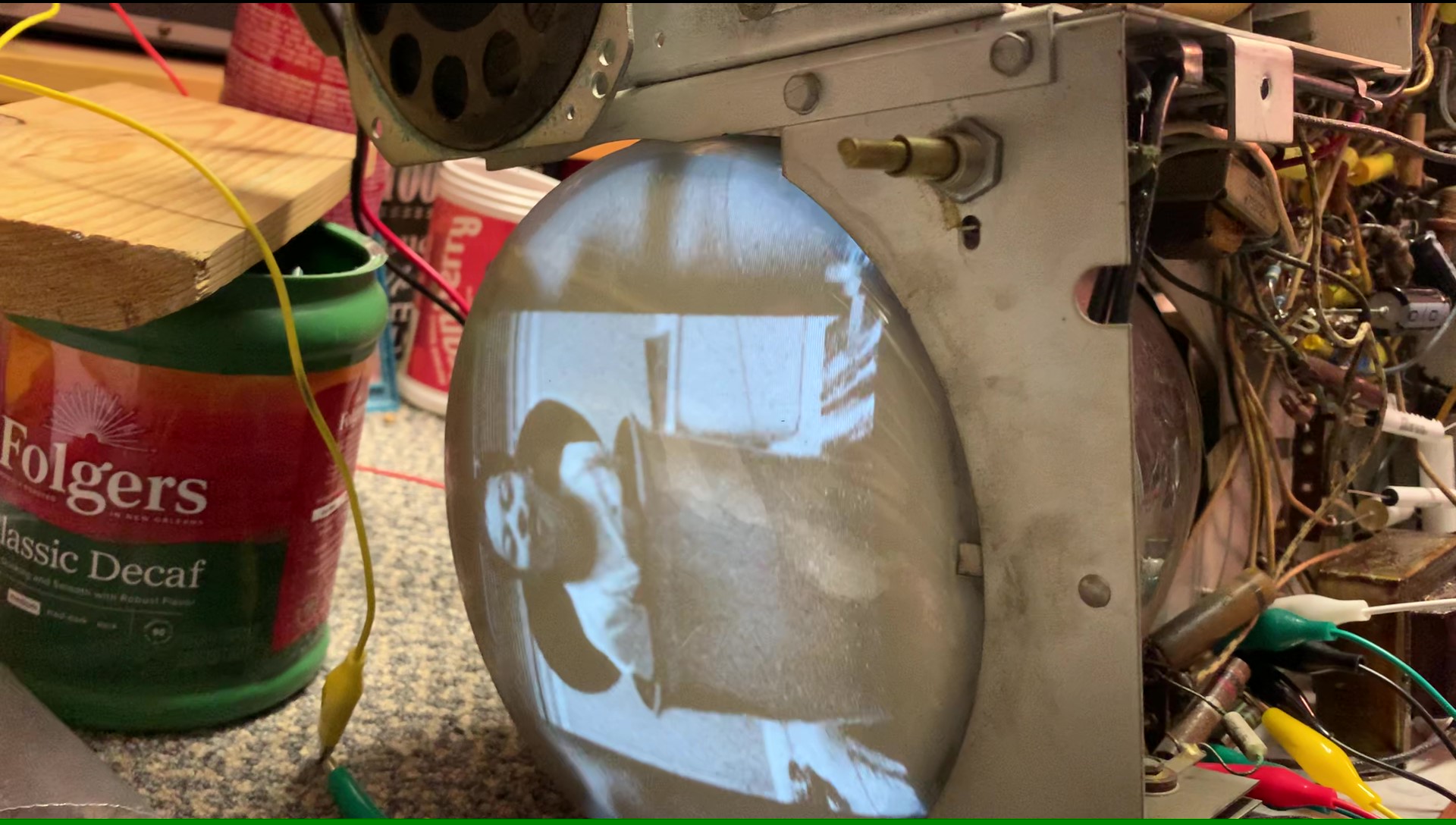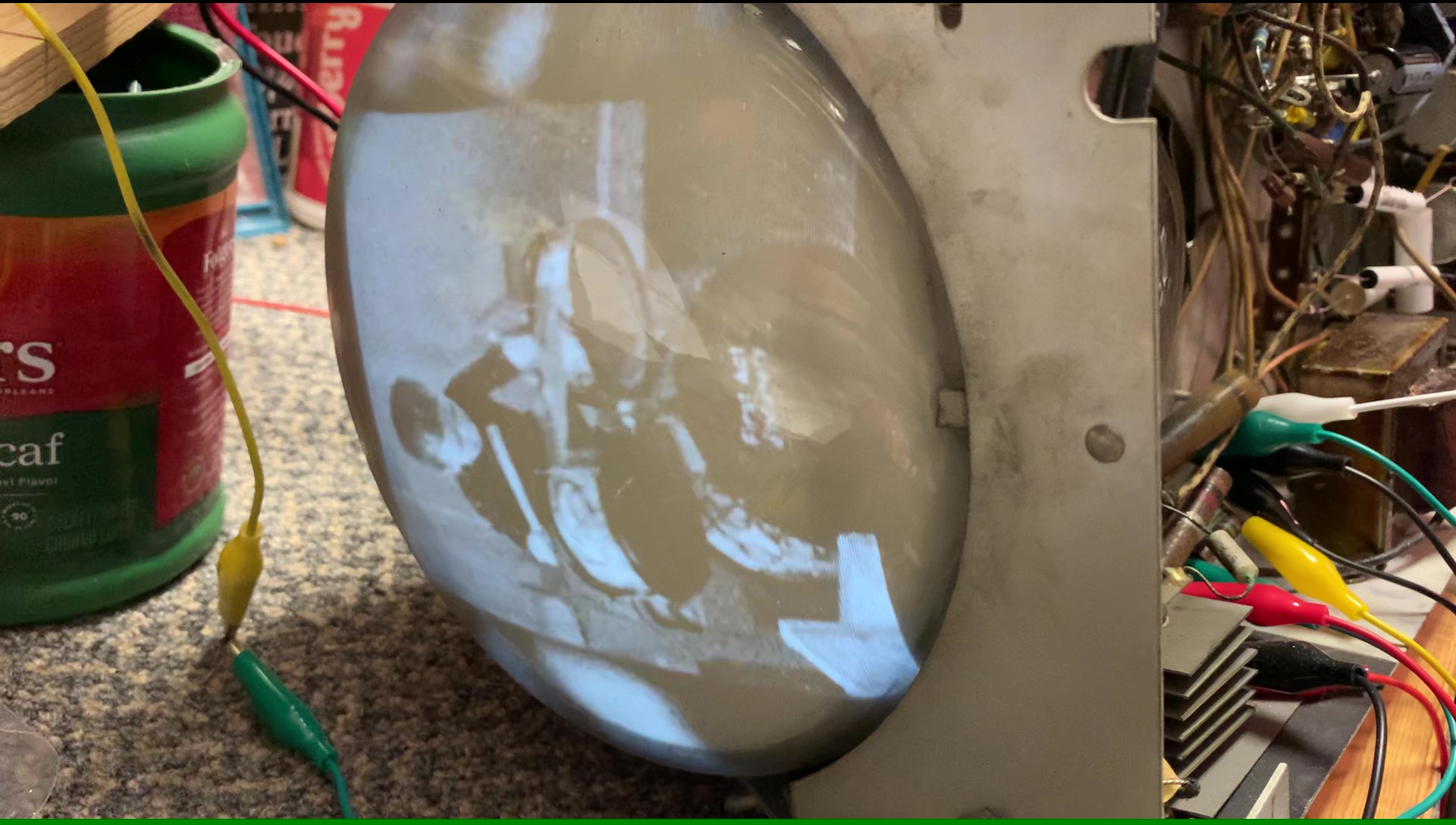02-02-2025, 11:51 PM
Here's tonight's accomplishments. I fed a signal into the tuner and found that I'd made an error in setting the 1077. I didn't realize that when using RF out that the video level also affected the picture! Or I forgot,  , anyway, I was adjusting the the RF level and noted the picture was a lot clearer than last time I'd tried, had a sync buzz in the sound, and realized I had the video output test lead near the set, so I turned the video level down thinking it was making interference - then I saw it! I was overloading the video signal, and when I turned it down, it came in clear as could be! I made a few other adjustments - then realized I was still running the filaments through my 150w bulb! Duh! Senior moment, so I bypassed, connected a set top box - and this is what happened next:
, anyway, I was adjusting the the RF level and noted the picture was a lot clearer than last time I'd tried, had a sync buzz in the sound, and realized I had the video output test lead near the set, so I turned the video level down thinking it was making interference - then I saw it! I was overloading the video signal, and when I turned it down, it came in clear as could be! I made a few other adjustments - then realized I was still running the filaments through my 150w bulb! Duh! Senior moment, so I bypassed, connected a set top box - and this is what happened next:


The contrast came to life and so did the clarity! This is only with a Horizontal hold and slight vertical adjustment. Sound is loud, but once I get those last few caps replaced, and a couple more resistors, I will do the final (hopefully) adjustments and do a burn in. I still need to pull the picture tube, clean and replace that cap inside the HV box, but I really didn't want to do that until I had about everything else running good.
A note: Please DON'T in any way take this as me being critical, and I'm sure Mr Anderson would probably agree, but TV work takes a totally different approach and techniques than other equipment, thus should explain why I approach them differently. It takes different test equipment, a different mindset, and different diagnoses. Plus, there are MUCH higher voltages in different areas, so you have to be careful. If you watch some of Mr Andersons or Shango066's videos along with some others, you will find their techniques on TV work is similar to mine. We power up and try to get the screen to light up because that screen is the "window to the soul" of the set we are working on. If there's a bad picture tube, deflection yoke, horizontal or vertical transformer, those are often very critical to the set showing a good picture when finished. If any of those parts are bad, there's no point going any further replacing caps, tubes or spending time until the right parts are located, or the decision is made to use the set for parts, or ... dumpster.
The contrast came to life and so did the clarity! This is only with a Horizontal hold and slight vertical adjustment. Sound is loud, but once I get those last few caps replaced, and a couple more resistors, I will do the final (hopefully) adjustments and do a burn in. I still need to pull the picture tube, clean and replace that cap inside the HV box, but I really didn't want to do that until I had about everything else running good.
A note: Please DON'T in any way take this as me being critical, and I'm sure Mr Anderson would probably agree, but TV work takes a totally different approach and techniques than other equipment, thus should explain why I approach them differently. It takes different test equipment, a different mindset, and different diagnoses. Plus, there are MUCH higher voltages in different areas, so you have to be careful. If you watch some of Mr Andersons or Shango066's videos along with some others, you will find their techniques on TV work is similar to mine. We power up and try to get the screen to light up because that screen is the "window to the soul" of the set we are working on. If there's a bad picture tube, deflection yoke, horizontal or vertical transformer, those are often very critical to the set showing a good picture when finished. If any of those parts are bad, there's no point going any further replacing caps, tubes or spending time until the right parts are located, or the decision is made to use the set for parts, or ... dumpster.
If I could find the place called "Somewhere", I could find "Anything"
Tim
Jesus cried out and said, "Whoever believes in me , believes not in me but in him who sent me" John 12:44



![[-] [-]](https://philcoradio.com/phorum/images/bootbb/collapse.png)


